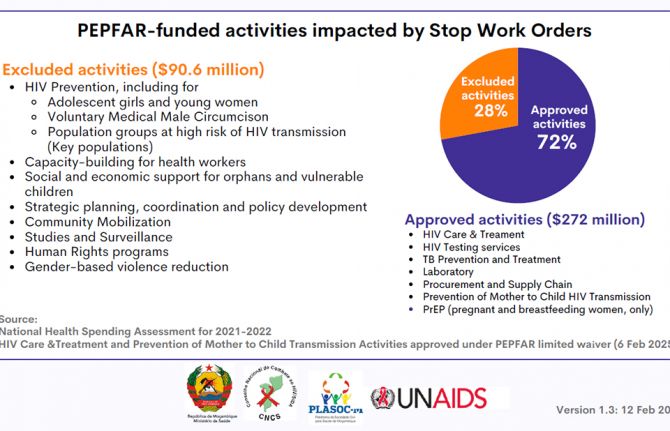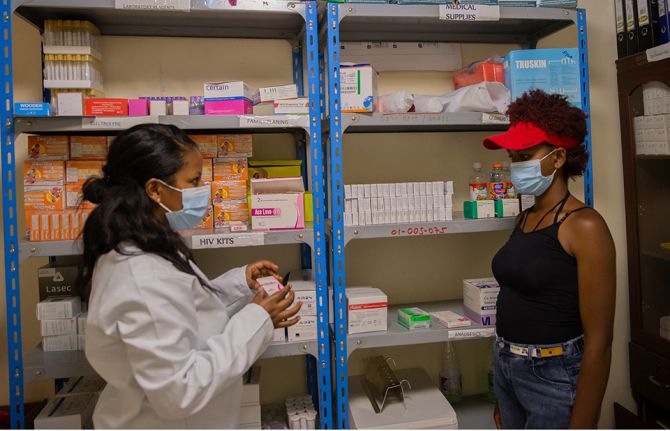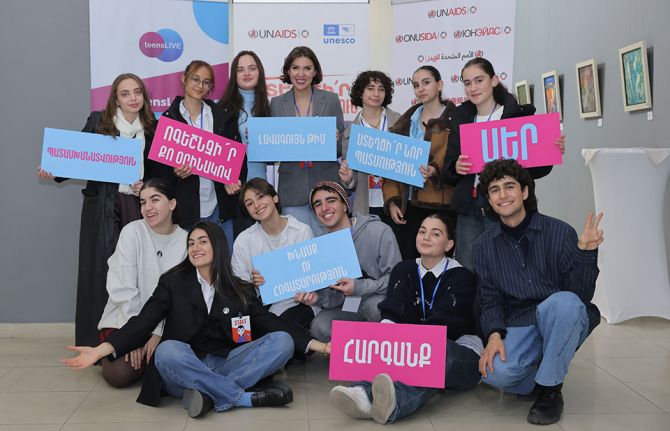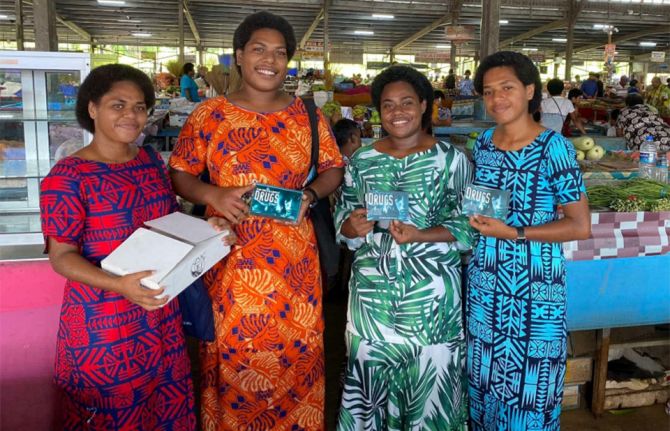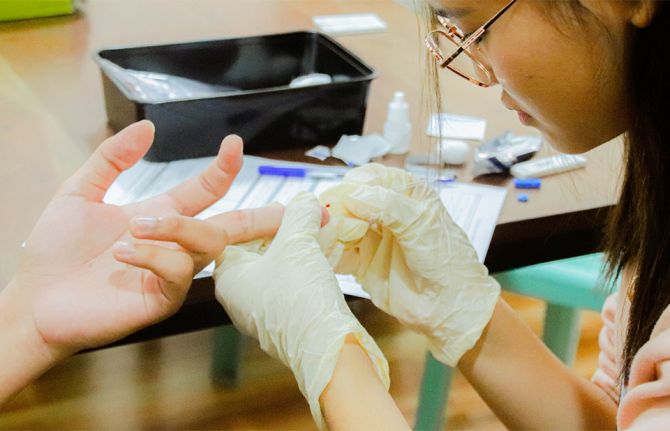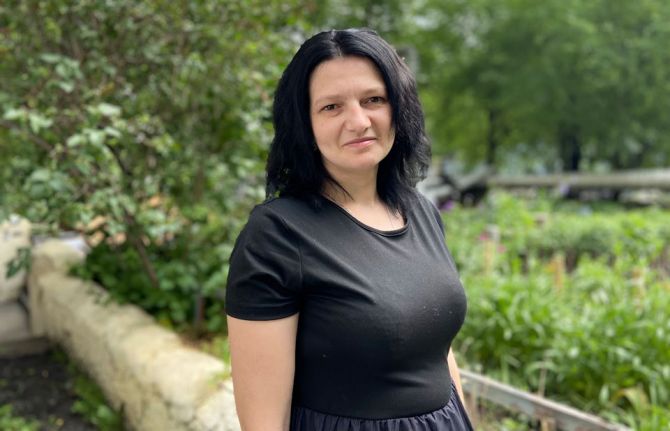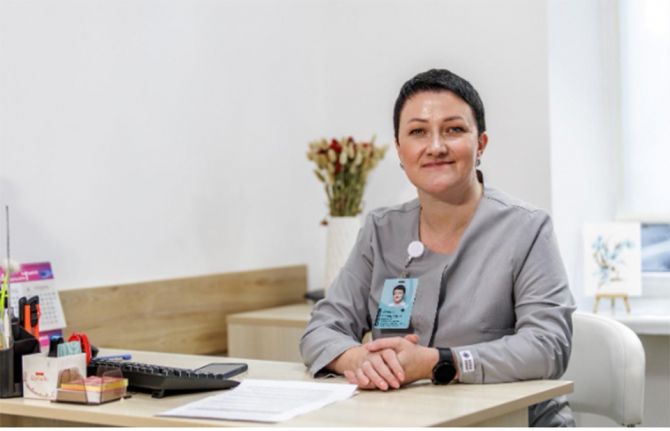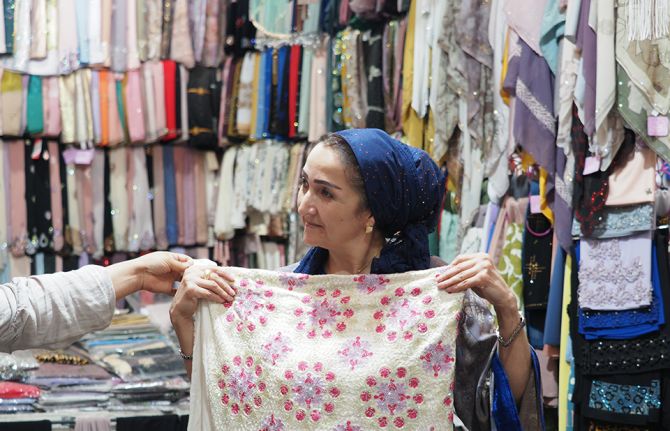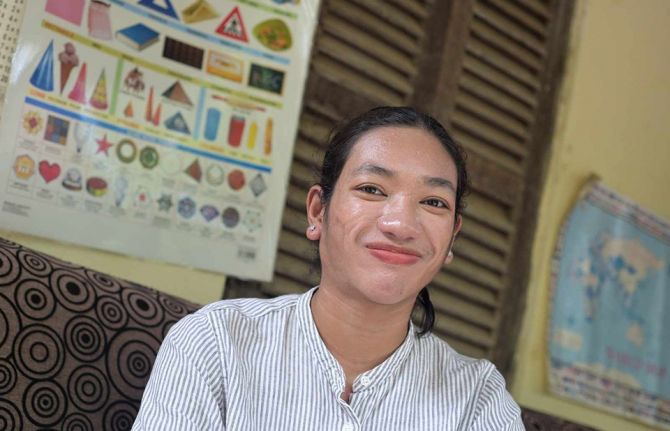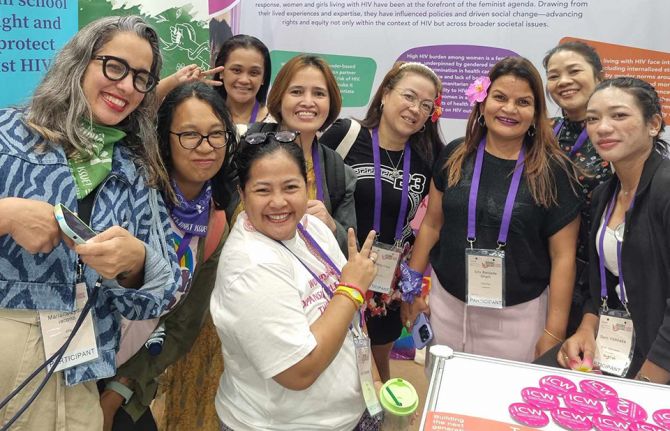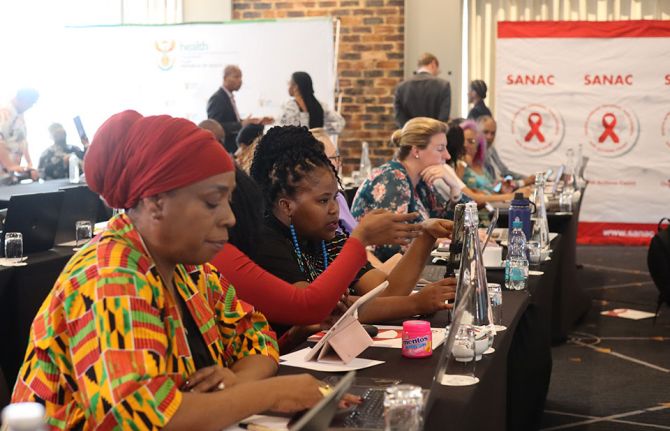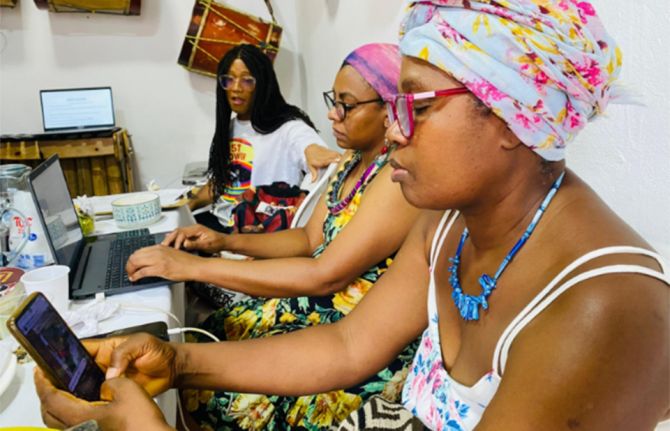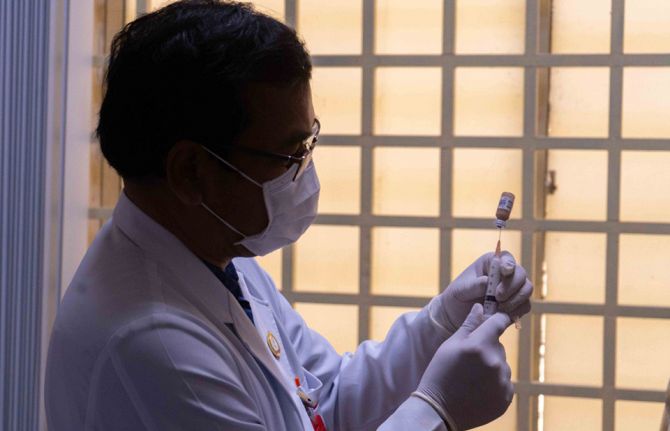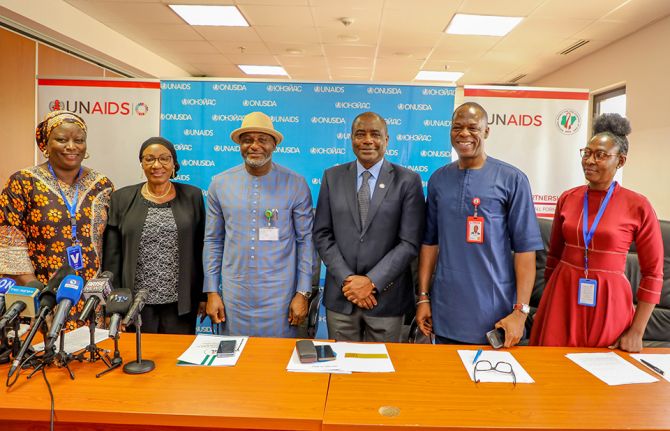
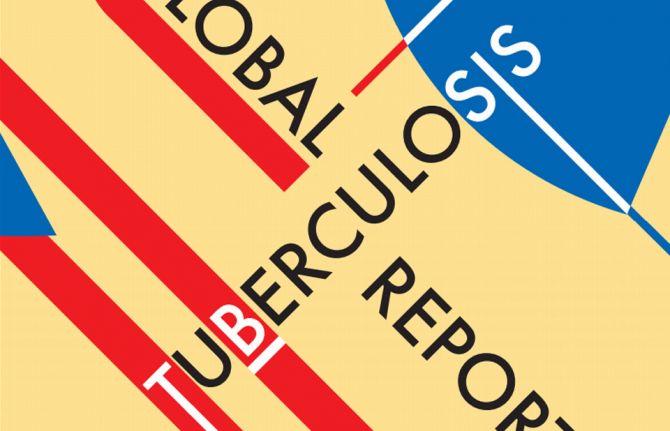
Update
The global threat of drug resistance emphasized in new WHO tuberculosis report
13 October 2016
13 October 2016 13 October 2016In the 2016 report on the state of the global tuberculosis (TB) epidemic and response, the World Health Organization announced that there were an estimated 10.4 million new TB cases in 2015, higher than previous estimates. However, only 6.1 million TB cases were detected and officially reported in 2015, demonstrating a major gap in finding and testing people who may have TB. Six countries accounted for 60% of the total global burden of TB—China, India, Indonesia, Nigeria, Pakistan and South Africa. Tuberculosis remains a leading cause of death among people living with HIV, despite being curable at low cost. The cost of not treating TB, however, is high in terms of disease spread and death.
In 2015, an estimated 1.8 million people died from TB—of these deaths, 0.4 million occurred among people who were also HIV-positive. More than 20% of people living with HIV and TB disease were not receiving life-saving antiretroviral medicines, a missed opportunity to deliver comprehensive and integrated care and treatment. TB can also be prevented among people living with HIV with early antiretroviral treatment and isoniazid preventive therapy, but uptake of preventive therapy remains inadequate.
A particularly worrying finding from the report is the inadequate response to the rising burden of multi-drug resistant (MDR) TB. Only one in five people who are eligible received treatment for MDR TB in 2015. Furthermore, the cure rate for MDR TB remains disappointingly low, at 52% globally, despite recent improvements in access to new treatments.
Increasing drug resistance is one of the greatest threats to reducing the burden of illness and deaths from infectious diseases, such as HIV, TB and malaria, that prevent many people living in low- and middle-income countries from achieving their full potential. Urgent action is needed to prevent the development and spread of drug resistance, and investment in research to find new therapies to replace those rendered ineffective through drug resistance is critical.
Quotes
“We face an uphill battle to reach the global targets for tuberculosis. There must be a massive scale-up of efforts, or countries will continue to run behind this deadly epidemic and these ambitious goals will be missed.”
“Whenever we lose an effective first-line treatment for infectious disease owing to the development of drug resistance, the world loses another opportunity to save lives and promote the health, well-being and development of people, especially people living in poverty. Urgent attention, action, investment and research are needed to deal with this looming crisis.”
Resources
Related


Update
Investments in harm reduction programmes: the need to turn a global crisis into a global solution
14 October 2016
14 October 2016 14 October 2016Global progress
The world has come a long way in providing harm reduction services to people who use drugs. Harm Reduction International (HRI) data from the past decade show that there is now some level of harm reduction programming in over half of the 158 countries with documented injecting drug use. Where in operation, harm reduction has dramatically improved and protected the health, well-being and human rights of people who use drugs.
Global action
In 2016, at the United Nations General Assembly Special Session on the World Drug Problem in April and at the United Nations General Assembly High-Level Meeting on Ending AIDS in June, Member States secured strong commitments for harm reduction. These commitments now need to be translated into the necessary policy and programmatic changes, as well as investments in harm reduction programmes.
Global crisis
Despite the growing acceptance of harm reduction around the world, provision still falls far short of what is needed, particularly in prisons. At the last count, only US$ 160 million was spent on harm reduction in low- and middle-income countries. More worryingly, in recent years, as donors have started to shift funding to low-income countries, progress made is at risk because the vast majority of people who inject drugs live in high- and middle-income countries.
“People who use drugs remain criminalized around the world—an ineffective criminal justice response to a public health and human rights issue which continues to fuel HIV transmission,” says Jamie Bridge, Senior Policy and Operations Manager at the International Drug Policy Consortium. “Even where well-funded, well-designed harm reduction services exist, these will struggle to have an impact if the legal and policy environment stigmatizes people who use drugs and ultimately deters them from accessing support. Policy reform must therefore be seen as a core part of the response,” he added.
Global solution
Earlier this year data released by HRI and the Burnet Institute in HRI’s report The case for a harm reduction decade showed that it is possible to end the AIDS epidemic among people who inject drugs by redirecting as little as 7.5% of the US$ 100 billion currently spent each year on drug control to harm reduction.
HRI’s “10 by 20” campaign calls on governments to redirect 10% of their drug control spend to harm reduction by 2020. The impact this would have on ending the AIDS epidemic has already been described but it would also fund prevention and treatment for viral hepatitis, along with life-saving naloxone, which reverses opioid overdose. It would also strengthen networks for people who use drugs and civil society organizations that advocate for human rights and harm reduction.
“This World AIDS Day governments, donors and international agencies must not simply put their “hands up” for harm reduction. They must put their hands in their pockets and ensure full funding for life-saving harm reduction services,” says Rick Lines, Executive Director of Harm Reduction International.
Partners
Hands up for #HIVprevention — World AIDS Day campaign
Related

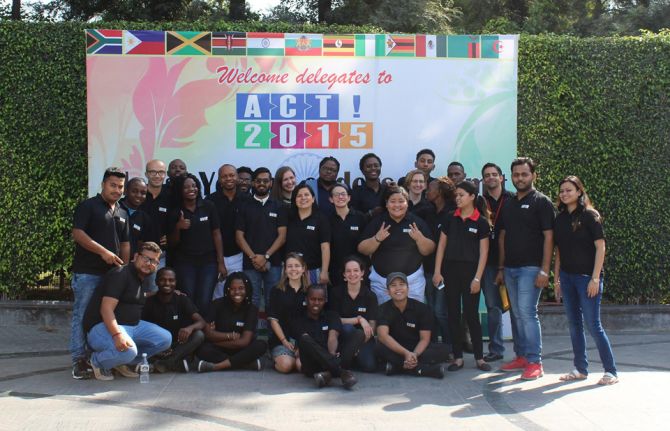
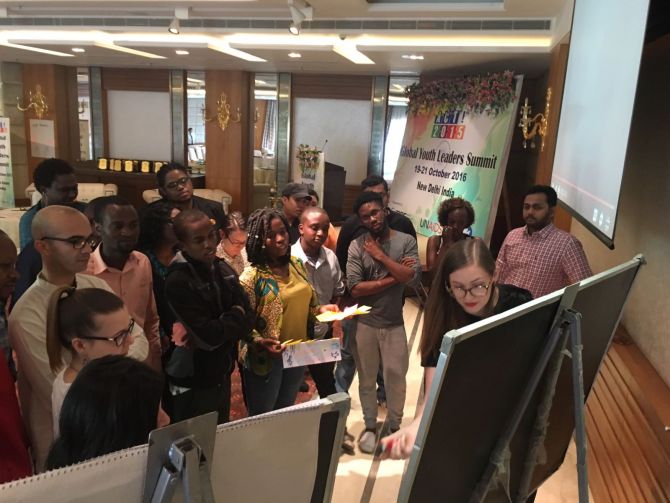
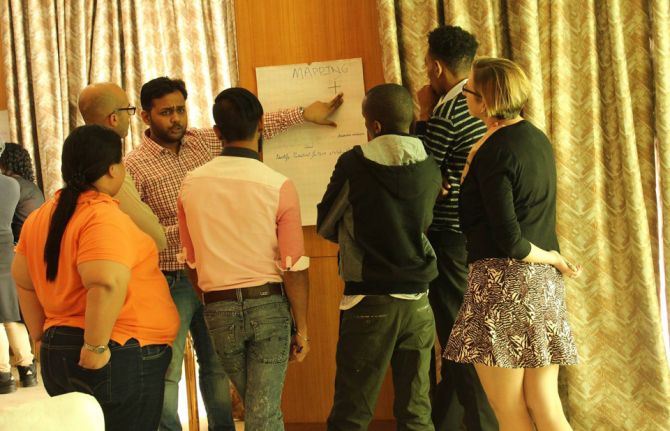
Update
ACT!2015: We are all accountable!
27 October 2016
27 October 2016 27 October 2016Youth activists from around the world call for comprehensive sexuality education and better HIV, sexual and reproductive health and rights services tailored to the needs of adolescents and young people. The activists came together at the ACT!2015 Global Youth Summit, 19 to 21 October 2016 in New Delhi, India from Algeria, Bulgaria, India, Jamaica, Kenya, Mexico, Nigeria, Philippines, South Africa, Uganda, Zambia and Zimbabwe.
Adolescents aged 10-19 years and young people aged 15-24 are among the groups most affected by HIV globally. However, they continue to face tremendous barriers to access services that are youth-friendly and targeted to meet their needs.
Anupriya Patel, Minister of State, Ministry of Health and Family Welfare, India opened the summit stressing the need to ensure meaningful engagement of young people in decision-making processes, especially concerning young people’s health. She committed to engage Indian youth in the national HIV response and achievement of the SDGs. Janine Kuriger, Director, Cooperation in India, Swiss Agency for Development and Cooperation highlighted now was the time to act and ensure that we achieve the youth-related SDGs.
Summit participants agreed that they need to document the challenges youth face in accessing HIV, sexual and reproductive health and rights services. This evidence can be used to develop national youth advocacy campaigns and establish greater accountability frameworks for national governments. National youth alliances can use the frameworks to monitor country progress towards the youth targets and commitments established in the 2016 United Nations Political Declaration on Ending AIDS and the Sustainable Development Goals (SDGs).
At the meeting, organized by UNAIDS, the International Planned Parenthood Federation, and The Dove Foundation—an ACT!2015 national partner in India—each country delegation produced a national plan outlining how young people will gather evidence, use it for advocacy at all levels, and to evaluate national progress towards ending AIDS among youth by 2030.
In South Africa the youth alliance plans to make youth and adolescent health service standards accessible and acceptable to young people in three provinces. In Bulgaria, youth networks will ensure that the comprehensive sexuality education law that was recently approved is being implemented at the local level, and that pending quality gaps are addressed. “We will identify those gaps, advocate for the government to strengthen the law, and push for its full implementation,” said Dina Tomas, ACT!2015 national youth alliance member, Bulgaria.
ACT!2015 is a youth-led social action initiative supported by UNAIDS, IPPF and The PACT, financed by the Swiss Government, aimed at strengthening young people’s evidence gathering and data analysis skills to facilitate advocacy and accountability around policies that limit young people’s access to services. ACT!2015 national youth alliances are composed of 12-15 youth-led and youth-serving organizations and networks per country, which work together to advance young people’s access to HIV and sexual and reproductive health, human rights, participation and leadership in the HIV response.
Quotes
“To achieve sustainable and meaningful development it is clear that those most affected must be in the driving seat. Young people, including those from key populations, are in the best position to identify the challenges that they face and create lasting solutions.”
“ACT!2015 is a clear example of how young people are taking a stand in the HIV response, filling in the evidence gaps, using them for advocacy, evaluating their efforts and working collaboratively in country for a common goal.”
“The global coordinating meeting has provided the most opportune moment for youth advocates around the world to utilize youth led, data driven accountability as primary, game changing tool to increase the political will, prioritization and investment in adolescent and youth sexual reproductive and health rights from now to 2030.”
Region/country

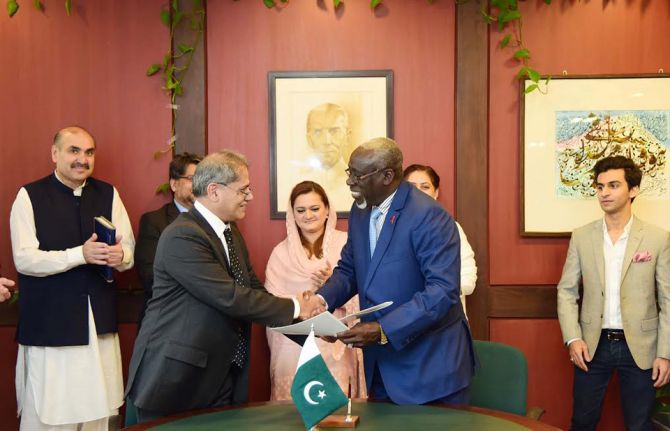
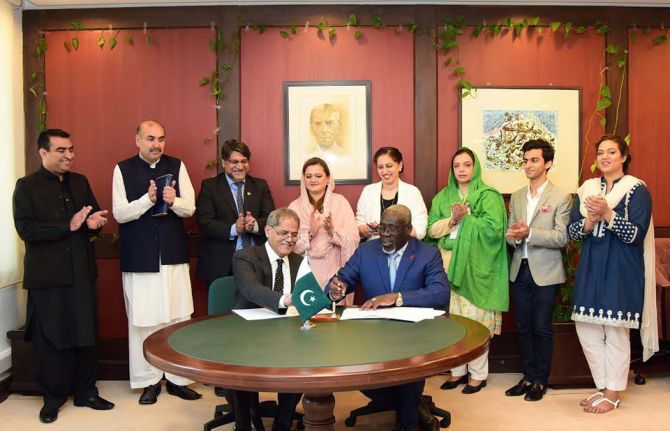

Update
Pakistan’s parliamentarians and UNAIDS strengthen collaboration in the AIDS response
25 October 2016
25 October 2016 25 October 2016The Pakistan Institute for Parliamentary Services (PIPS) and UNAIDS have signed an agreement to strengthen collaboration to protect the rights of people living with and most at risk of HIV. The Memorandum of Understanding was signed in Islamabad, Pakistan on 21 October by Zafarullah Khan, Executive Director, PIPS and Mamadou Sakho, UNAIDS Country Director for Pakistan and Afghanistan in the presence of Marriyum Aurangzeb, National Convener, Parliamentary Sustainable Development Goals.
With the new agreement UNAIDS and PIPS will work together to raise public awareness of Pakistan’s commitment to the AIDS response. They will also build the capacities of parliamentarians to find solutions for HIV-related problems at district level and to create a protective legal environment for an effective AIDS response. The partnership will also encourage parliamentarians to call for budgetary allocations for the AIDS response at the national and provincial levels.
During the signing ceremony, Ms Aurangzeb highlighted the importance of parliamentary oversight to advocate for the public’s basic health and education rights. She reiterated the strong resolve of the national parliament to take up a people-centric development agenda and improve the service delivery of government through legislation.
Quotes
“This agreement is a milestone in the cooperation between UNAIDS and Pakistan’s parliamentarians. Together we can ensure that no-one is left behind and that we Fast-Track effective HIV programmes and reach our goal of ending of the AIDS epidemic by 2030.”
Region/country

Update
First national conference on HIV in Kazakhstan devoted to drafting strategy to Fast-Track the AIDS response
20 October 2016
20 October 2016 20 October 2016At a conference entitled HIV: Yesterday, Today, Tomorrow, experts discussed the urgent measures that Kazakhstan should take to Fast-Track the AIDS response in the country. More than 170 governmental officials, activists, scientists, experts, health-care professionals and representatives of the AIDS community from all 16 regions of Kazakhstan gathered in Almaty, Kazakhstan, from 12 to 13 October for the conference.
Access to HIV testing for key populations, the cost of the diagnosis and treatment of people living with HIV, scaling up harm reduction programmes, such as opioid substitution therapy, and optimizing investments in Kazakhstan’s AIDS response were some of the issues discussed in the context of developing a new national strategy on HIV.
The issue of HIV prevention among young people was also highlighted during a ceremony to appoint Asya Ospanova as an envoy for the UNAIDS Regional Youth Red Ribbon Team, a group of young personalities from 10 countries of eastern Europe and central Asia. In her new role, Ms Ospanova, an actress, singer and television presenter, will raise awareness about HIV and promote tolerance towards people living with HIV among adolescents and young people in Kazakhstan.
The HIV epidemic in Kazakhstan is concentrated among populations at higher risk, such as people who inject drugs, sex workers, men who have sex with men and prisoners. The government estimates that more than 18 000 people were living with HIV in the country as of June 2016.
Quotes
“People who inject drugs have the same rights as any other citizen of Kazakhstan. Stigma towards people who inject drugs, sex workers and men who have sex with men is unacceptable.”
“Kazakhstan is on track to be the first country in central Asia to achieve global treatment targets by 2020, a major step towards ending the AIDS epidemic by 2030.”
“I am confident that the HIV epidemic in Kazakhstan can be stopped much earlier than 2030.”
“I believe that today we have to talk openly about the importance of HIV prevention, safer sex and condom use and promote voluntary HIV testing among young people, so that young men and young women in Kazakhstan know their HIV status.”
Region/country
Related

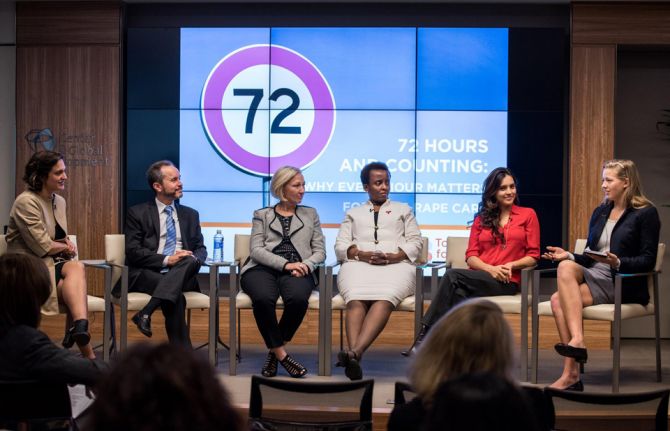
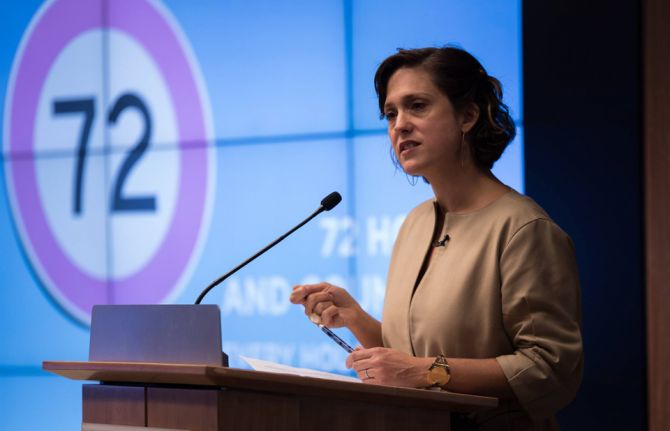
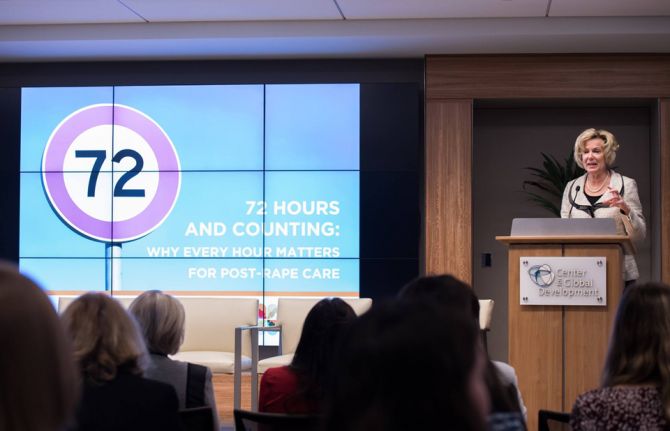
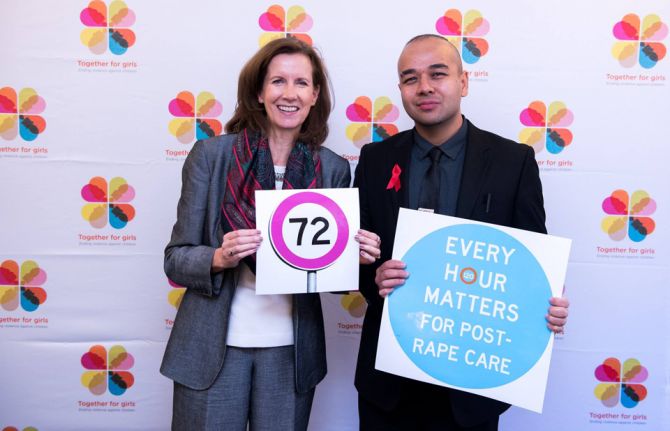
Update
Together for Girls commemorates International Day of the Girl Child with Washington event
11 October 2016
11 October 2016 11 October 2016On the International Day of the Girl Child, 11 October, Together for Girls and its partners, including the Government of the United States of America, the Government of Canada, five United Nations agencies, including UNAIDS, and several private sector organizations cohosted an event entitled 72 Hours and Counting: Why Every Hour Matters for Post-Rape Care. Panellists at the event called for increased domestic and global programming to address violence against girls.
Every Hour Matters is a new global advocacy campaign designed to raise awareness of the need to ensure that people have timely access to comprehensive services after rape and of the need for such health services to be made available in all communities. Every Hour Matters was launched in 2016 by Together for Girls, a public–private partnership focused on ending violence against children, particularly sexual violence against girls.
Quotes
“For women raped in southern Africa, their potential to be exposed to HIV is about one in five. In some places it’s one in three and in some heavily burdened urban areas one in two. We know that young women are at a particularly high risk. Far too many young women report that their first sexual experience is rape. That’s what Together for Girls is all about and why today is so important.”
“As a survivor of sexual assault as a child myself, I know we are failing to adequately protect and support those who experience rape, especially adolescent girls, who are acutely vulnerable to sexual violence. While global and national leaders consider investing new resources to prevent violence against children, they also should be focused on eliminating stigma associated with rape to ensure survivors get the post-assault care they need and deserve in order to heal quickly and fully.”
“The violence against children study conducted in Kenya in 2010 revealed that of all girls who were assaulted, only 7% sought services and only 3% received them. For boys, the picture is even grimmer: 2% sought services and fewer than 1% received them. Children don’t access services for a host of reasons, including feelings of shame, embarrassment or self-blame, which can prevent them from talking about their experiences or seeking help.”
“This problem is so much bigger than me, it’s so much bigger than my name, it’s so much bigger than my comfort. In a situation where I had lost complete control, I wanted to take it back and I want to help other young women realize they can take it back too and realize that there’s a community out in the world that is ready and standing up to fight for them.”
Press centre
Partners
Region/country

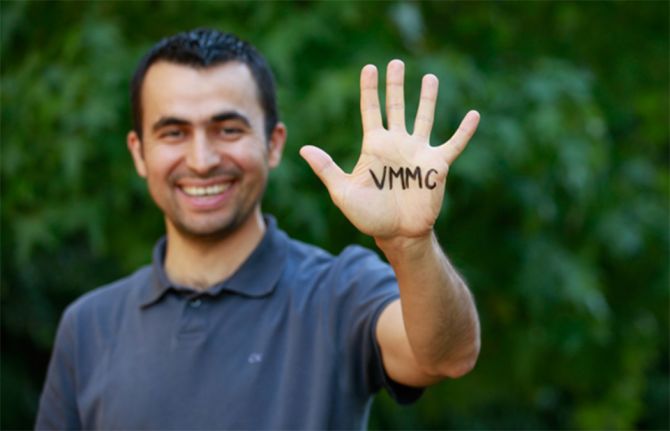
Feature Story
Voluntary medical male circumcision: a core campaign to reach the Fast-Track Targets
17 October 2016
17 October 2016 17 October 2016AIDS-related illnesses remain the single largest cause of years of life lost among adolescent boys and men of reproductive age in eastern and southern Africa, although few policies and programmes focus on HIV services for men and boys or on improving their access to health care. However, one type of programme, voluntary medical male circumcision (VMMC), stands out, as it has had reached men and boys in large numbers and is 60% effective in preventing against female-to-male transmission of HIV.
In 2007, the powerful evidence of the preventive impact of VMMC led the World Health Organization (WHO) and UNAIDS to recommend VMMC, particularly in high-burden countries with a low prevalence of male circumcision. They urged the scale-up of voluntary medical male circumcision in 14 countries—Botswana, Ethiopia, Kenya, Lesotho, Malawi, Mozambique, Namibia, Rwanda, South Africa, Swaziland, the United Republic of Tanzania, Uganda, Zambia and Zimbabwe—guided by the actions of ministries of health and other stakeholders.
The highly aspirational target set was to provide VMMC services to more than 20 million men by the end of 2016 in the priority countries. By the end of 2015, 11.7 million adolescent boys and men had been circumcised, and by the end of 2016 that number is projected to reach 14 million, a huge success by any measure. Some countries are attaining and surpassing targets. In 2015, the Gambella province in Ethiopia, Kenya and the United Republic of Tanzania all exceeded their targets set in 2011.
Today, governments and partners, such as UNAIDS, WHO and the United States President’s Emergency Plan for AIDS Relief, are focused on continuing to scale up and maintain this successful programme, but there is cause for concern. Following years of rapid increase, the annual number of circumcisions performed within eight of the 14 priority countries stayed level or decreased in 2015.
There is guidance, however, for a way forward. A new WHO and UNAIDS report, Effective HIV prevention and a gateway to improved adolescent boys’ & men’s health in eastern and southern Africa by 2021, describes the new strategic directions for the years to come. In order to reach the Fast-Track Targets, the annual number of VMMCs needs to increase to 5 million per year. At the same time, a comprehensive people-centred approach to service delivery for men and boys needs to be adopted at the country level, with tailored services to be offered to individuals in different age groups and with different risk profiles.
The report lists the following as the key elements that all stakeholders are encouraged to work together to achieve:
- Promoting VMMC as part of a wider package of sexual and reproductive services for men and boys, including comprehensive sexuality education, the use of condoms and communication around gender norms, including positive notions of masculinity.
- Using new integrated service delivery models.
- Using approaches that are tailored for various age groups and locations.
- Increasing domestic funding to ensure the sustainability of VMMV and expanding sexual and reproductive health services for men and boys.
- Developing new approaches for adolescent and early infant circumcision.
- Breaking down myths and misconceptions about circumcision.
The Clearinghouse on Male Circumcision for HIV Prevention is a collaborative effort among partners, including UNAIDS, for sharing information and resources with the international public health community. The resource library has more than 900 entries and can be searched by topic or country.
“Voluntary medical male circumcision provides a much needed entry point for reaching men and boys with other HIV prevention and health services, which would in turn benefit women and girls,” said UNAIDS Executive Director, Michel Sidibé. “We cannot reach our goals without it,” he added.
Related videos
Related

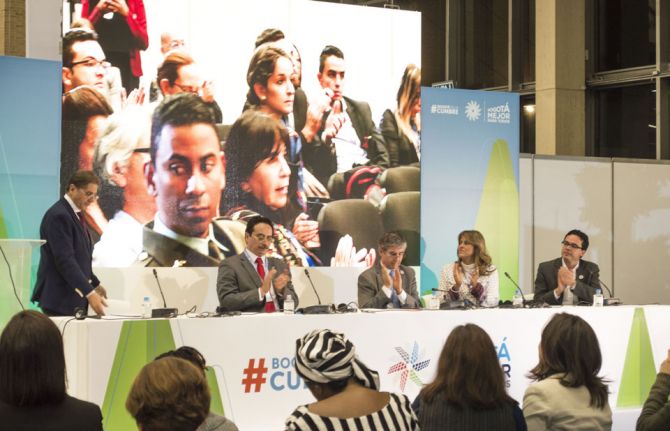
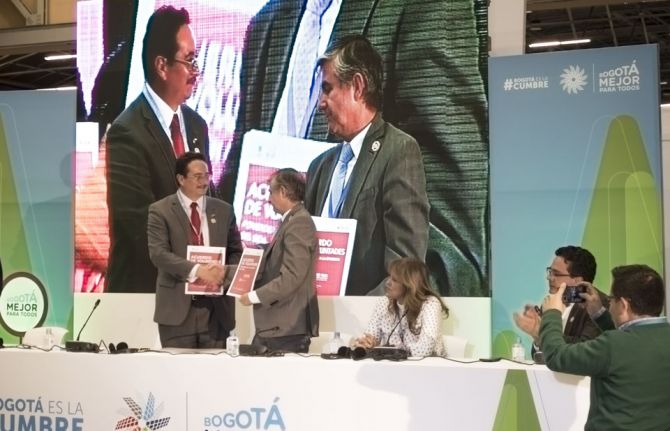
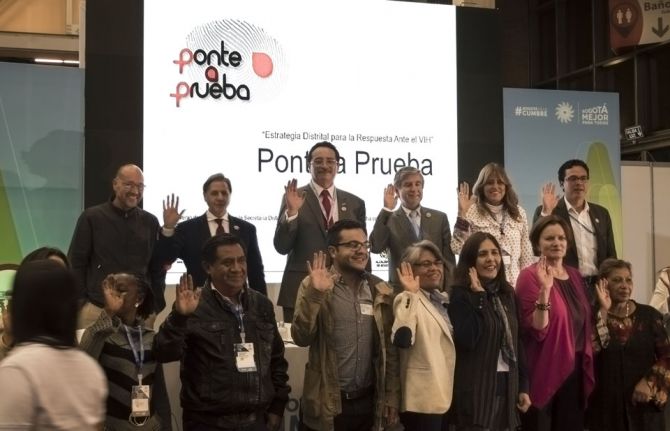

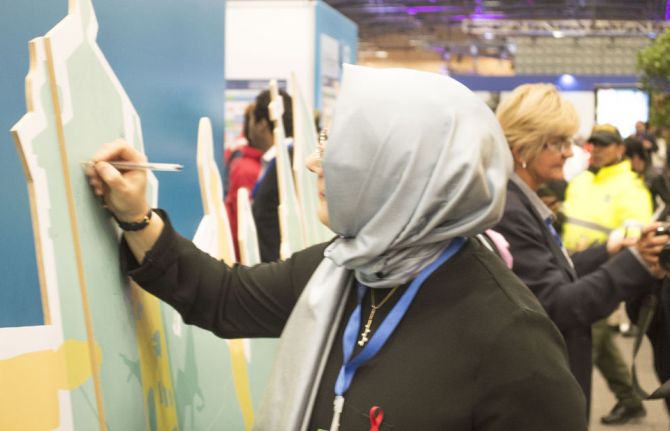
Update
Colombian city representatives join HIV prevention campaign
18 October 2016
18 October 2016 18 October 2016Representatives of Bogotá and Medellín joined the UNAIDS Hands up for #HIVprevention campaign during the World Summit of Local and Regional Leaders, which was held in Bogotá, Colombia, from 12 to 15 October. While participating in a side event entitled HIV and Cities: a Contribution to Healthy and Inclusive Societies, they also discussed what needs to be done to strengthen HIV prevention in urban settings.
The session identified innovative strategies to address the social and urban determinants of the HIV epidemic and to prevent new HIV infections through community-based services in cities. For example, the city of Medellín supports youth-friendly centres that provide a comprehensive package of HIV and sexual and reproductive health services. The city of Bogotá, for its part, has held since 2013 an HIV testing campaign targeting key populations and other people affected by HIV.
The participants agreed that cities will play a critical role in accelerating the HIV response and ending the AIDS epidemic by 2030. They underscored that adopting a Fast-Track response to HIV offers a platform to address other public health challenges, including sexual and reproductive health, maternal health and gender-based violence.
UNAIDS, UN-Habitat and the International Association of Providers of AIDS Care have supported the Fast-Track cities initiative since 2014. The initiative is aimed at engaging mayors and other urban leaders to accelerate the HIV response. Working together, cities can take local actions for global impact.
Quotes
“The city of Medellín has the mission to promote and achieve health equity and is committed to ending AIDS as a public health threat.”
“Innovative collaborations at the public and private level, with the involvement of the communities and civil society, are key to strengthening prevention efforts and to ensuring effective and sustainable responses to HIV.”
“I am optimistic that cities in Colombia will succeed in ending the AIDS epidemic in urban areas because I have already seen cities like Bogotá and Medellín successfully adopt accelerated AIDS responses in partnership with communities and civil society.”
Region/country

Update
Vera Brezhneva to continue her work as UNAIDS Goodwill Ambassador for Eastern Europe and Central Asia
18 October 2016
18 October 2016 18 October 2016UNAIDS has announced the extension of the appointment of singer, actress and television presenter Vera Brezhneva as UNAIDS Goodwill Ambassador for Eastern Europe and Central Asia.
Since her appointment in November 2014, Ms Brezhneva has been drawing attention to the HIV epidemic in the region. During her visits to countries, she has spoken to health workers, people living with HIV and women, children and young people affected by HIV. Ms Brezhneva has also served as a spokesperson for public information campaigns and has promoted HIV prevention messages on social media.
The HIV epidemic continues to grow in eastern Europe and central Asia, where an estimated 1.5 million people were living with HIV in 2015.
Quotes
“I plan to continue using my popularity in eastern Europe and central Asia in order to change the attitude in society towards HIV and people affected by the epidemic. And I sincerely hope that the global goal, to end the AIDS epidemic by 2030, will become a reality in our region.”
"Thanks to Vera Brezhneva, thousands of people got tested for HIV. Thanks to her support, many people affected by the epidemic found the strength to fight and to believe in life.”
Region/country
- Eastern Europe and Central Asia
- Albania
- Armenia
- Azerbaijan
- Belarus
- Bosnia and Herzegovina
- Bulgaria
- Croatia
- Cyprus
- Czechia
- Estonia
- Georgia
- Hungary
- Kazakhstan
- Kyrgyzstan
- Latvia
- Lithuania
- Montenegro
- Poland
- Republic of Moldova
- Romania
- Russian Federation
- Serbia
- Slovakia
- Slovenia
- Tajikistan
- North Macedonia
- Türkiye
- Turkmenistan
- Ukraine
- Uzbekistan
Related

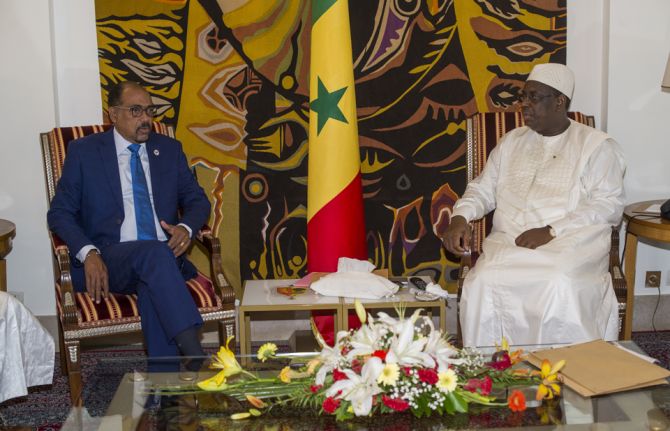
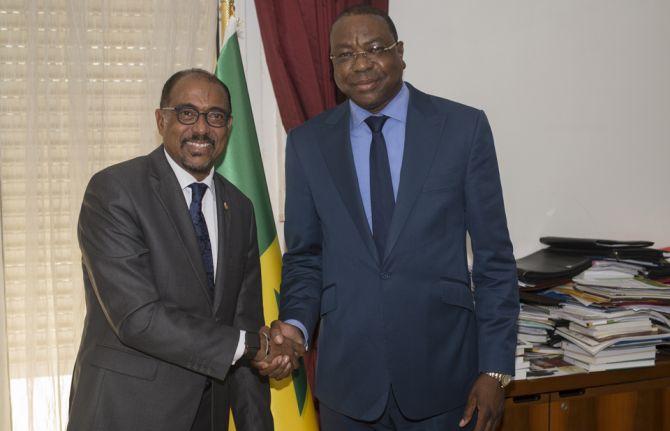
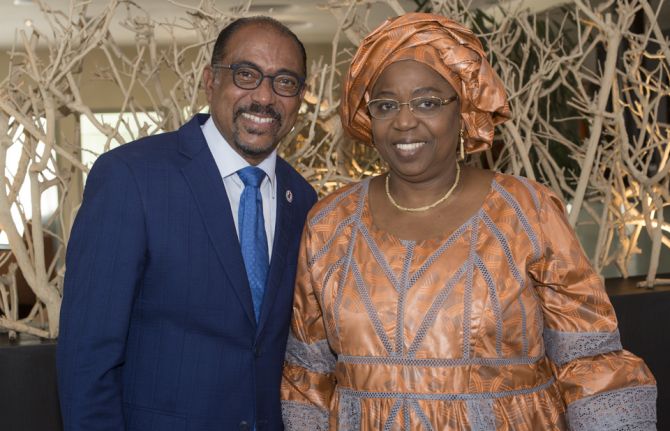

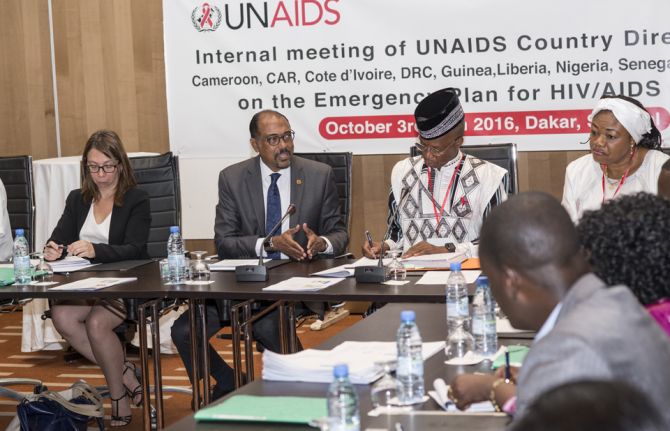
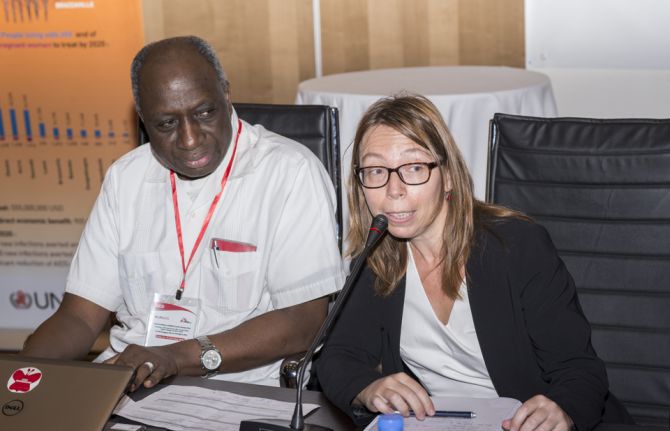
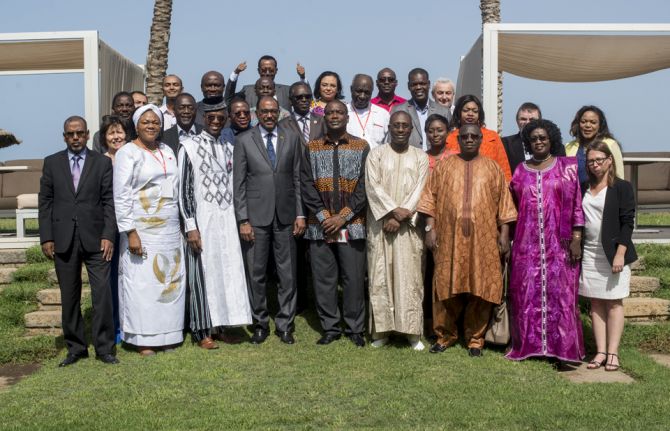
Update
Senegal supports efforts to increase treatment coverage for people living with HIV in western and central Africa
11 October 2016
11 October 2016 11 October 2016President Macky Sall of Senegal, who met with UNAIDS Executive Director Michel Sidibé in Dakar, Senegal, on 7 October, vowed to support an emergency plan to reach the goal of 90% of people living with HIV in western and central Africa accessing antiretroviral therapy by 2020.
In 2015, 28% of the 6.5 million people living with HIV in the region had access to the life-saving medicine, up from 14% in 2010.
During the United Nations General Assembly High-Level Meeting on Ending AIDS, held in June 2016, Mr Sidibé appealed to countries to Fast-Track the AIDS response in order to ensure that no one is left behind.
Ending the AIDS epidemic by 2030 is possible if, by 2020, 90% of people living with HIV know their status, 90% who know their HIV-positive status are accessing treatment and 90% of people living with HIV on treatment have suppressed viral loads.
While in Senegal, Mr Sidibé also met the Minister of Health, Awa Marie Coll-Seck, and the Minister of Foreign Affairs, Mankeur Ndiaye.
Quotes
“Not only do we support this emergency plan for the whole region, but in Senegal we are going to increase the resources dedicated to the HIV response in order to sustain our efforts.”
“We must act now and Fast-Frack the response to end the AIDS epidemic by 2030.”

